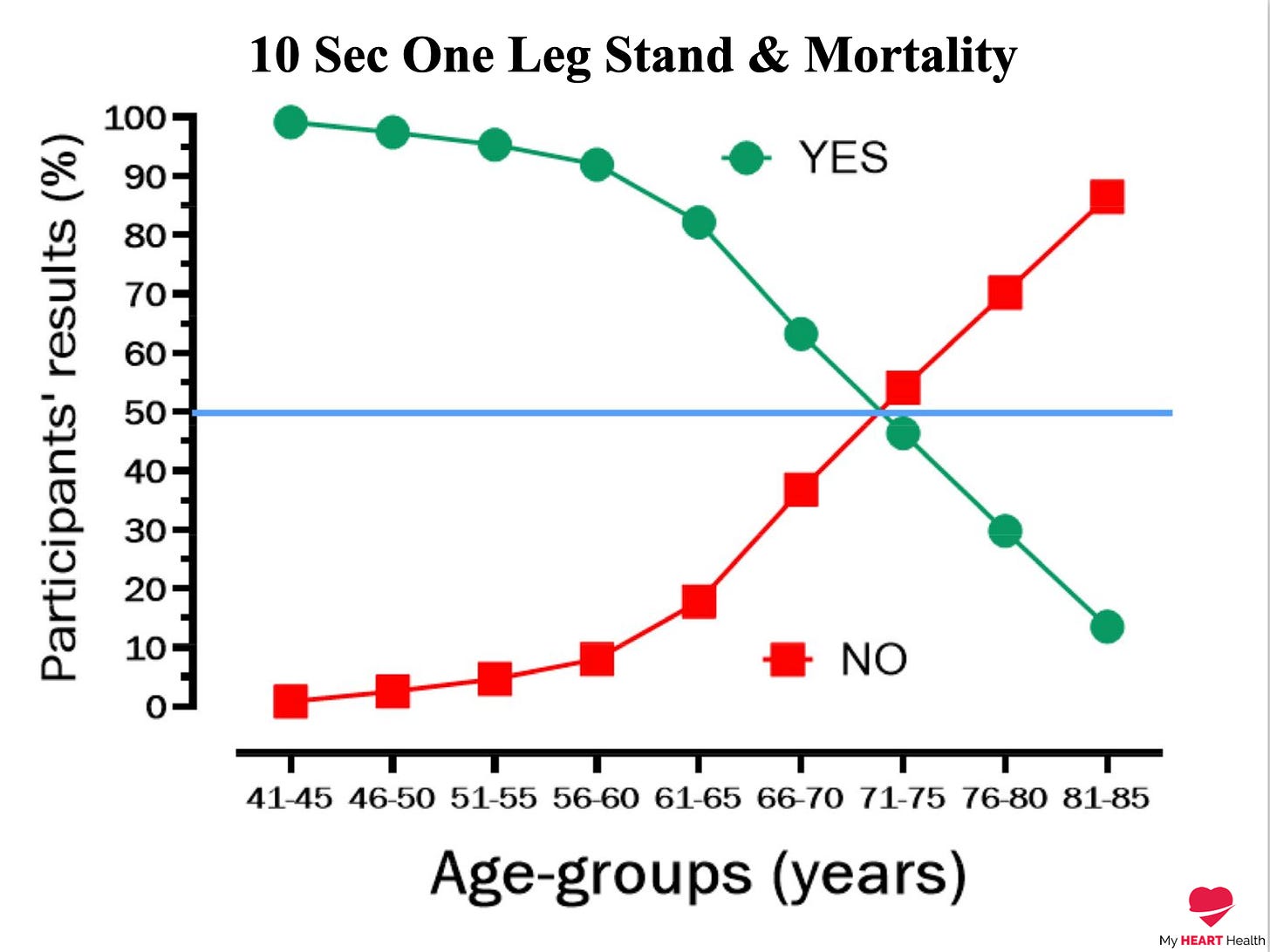Exercise Like Your Life Depends On It. Because It Does.

When it comes to increasing the length and quality of your life, it never comes down to one thing. It’s a function of many things.
Regardless of the complexity of the solution, I am frequently asked, “If there was one thing you could focus on, what would it be?”.
My answer is exercise. And the data to support this claim are impressive.

As always, we need to be precise about our goals and how they will likely change over time.
When someone says they ‘want to get fit’, I typically have no idea what they mean.
How you exercise if you want to be an Olympic-level sprinter compared to running 5 km at the weekends will be vastly different.
So when you say you want to exercise to get fit, to what end?
I base my goals on lifespan and healthspan: to be an active and capable 90-year-old. I want to win at the ‘game of life’. If I have the extreme good fortune of living to 90 years of age, I do not expect to be exercising at my current level. Still, I do hope that I will be able to pick up my grandchildren or put my travel bag in the overhead compartment of an aircraft unassisted.
The longevity physician, Peter Attia, calls this training for the centenarian Olympics.
If you reach 90 or 100 years of age with your cognitive capabilities intact, what ‘Centenarian Olympic’ events will you want to compete in? When you answer this question, you can then answer what it means to be ‘fit’ at 90 but, more importantly, how additionally fit you need to be now. So that when your performance declines to that level, you know how much better it needs to be in advance. This is called backcasting - setting a destination goal and then working backwards to where you need to be now.
If your goal is to be a kick-ass 90-year-old, you can’t settle for being an ‘average’ 50-year-old.
Think of it as the height needed for a plane to glide to the runway if it lost its engines. It will continually lose height, just as you will likely continue to lose athletic performance over time, even with the best exercise regime.
Most people are in an aircraft with minimal altitude and are likely to land well short of the runway they are aiming for.
Now that we know our goal, we can start looking at some metrics that match this objective.
Lifespan
The bottom line is that we are all aiming to not die from ‘anything’ earlier than we had planned. This is known in scientific research as reducing ‘All Cause Mortality’. If an intervention reduces the risk of heart disease but causes a matched increase in serious cancers, then it is unlikely to extend your life. It will simply change what is written on your death certificate.
Let’s look at the metrics with some of the best predictive ability on all-cause mortality. We will start with relatively simple measures and then move up the layers of complexity.
How about standing on one foot unassisted for 10 seconds? Sounds easy.
Yet about 20% of people in their early 60s cannot do so. By age 70, that number has increased to 50%. When most people reached their early 80s, that number is now close to 90%. So much for being able to compete in the Centenarian Olympics.

Functional ability aside, what did being unable to stand on 1 foot unassisted for 10 seconds mean from a lifespan perspective?
If you could perform the 10-second one-leg stand the probability of you being alive seven years later was over 90%. If you couldn’t do the one-leg stand, that number dropped to just over 65%—a huge difference.
It’s not that there is anything special about being able to stand on one leg, but it is a useful measure of many different elements of fitness in a straightforward test. Attempting to live longer by solely training your ‘one-foot standing’ ability will not be the best use of your time. A more comprehensive approach is needed.
How about another simple but very telling test? Grip strength.
For every 5kg drop in grip strength, all-cause mortality increases by 15-20%. However, the difference between the lowest and highest grip strength categories is about 10kg, so the mortality difference could be up to twice as much.
V02 Max
V02 Max is the maximum amount of oxygen your body can utilise during exercise. It is a standard measure of aerobic fitness. Specific aerobic training methods can increase this number significantly. When people say they are fitter, it is often a function of their body’s ability to extract more oxygen during exercise, which is what V02 Max represents.
Compared to those in the highest 2.5% V02 Max category, those in the lowest 25% category are five times more likely to have died over 10 years.
There is practically NOTHING in medicine that results in this magnitude of a survival advantage. This is an enormous difference.
Even comparing those in the bottom 25% to those in the top 25% of V02 Max, there was a 3 fold difference in survival.
Most individuals can get into the top 2.5% V02 Max category with appropriate training. The persons included in the study referenced were normal individuals, not elite athletes. The top 2.5% represented a V02 Max of at least >50 ml/Kg/min. For context, a professional cyclist can have a V02 max of over 80 ml/Kg/min.
Most people reading this will likely feel they are not in the top 2.5% but probably somewhere above average. So let’s define what was considered the bottom 25%. Not average, but ‘low’ fitness.
For a female in their mid-50s, low roughly equated to not being able to play a game of racquetball. For a male in their mid-50s, low equated to not being able to play a game of basketball.
Still think you are in the ‘average’ group?
Above average for the same age categories equated to comfortably running at 10Km/hr for females and playing a game of competitive soccer for males.
Very quickly, people realise that their idea of ‘average’ often does not match the real ‘average’.
And let’s not forget; if we aim to be above-average 90-year-olds, we can’t get there if we are only average 50-year-olds.
The plane you are flying just lost its engines, and for most people, they will crash well short of the runway.
It’s time to start gaining some ‘fitness’ altitude.
How you improve your fitness will be a function of defining your goals and working with a coach to help you hit them. Most will start this journey without a coach, but a coach is the secret ingredient most people need.
Some will say they cannot afford a coach. And for some, that will be true. But in terms of return on investment, it is hard to beat. You don’t need to work with them every day but getting specific guidance from an expert is vital.
When it comes to exercise, you need to treat it like your life depends on it.
Because it does.




